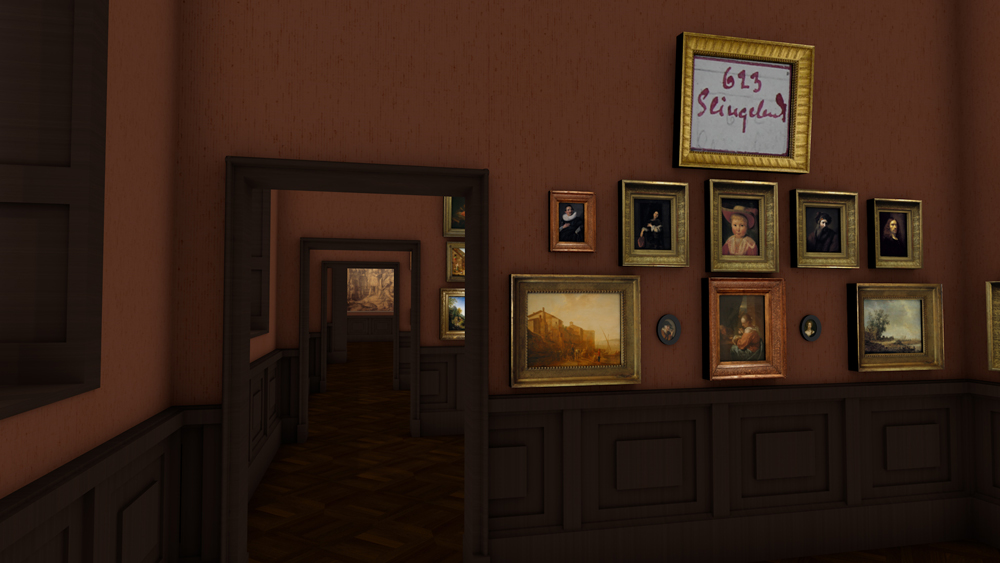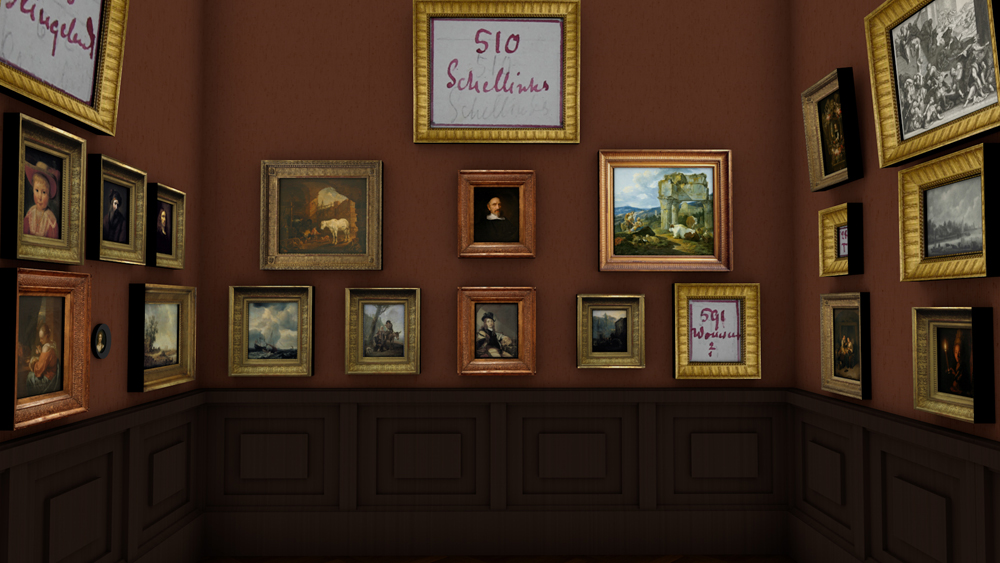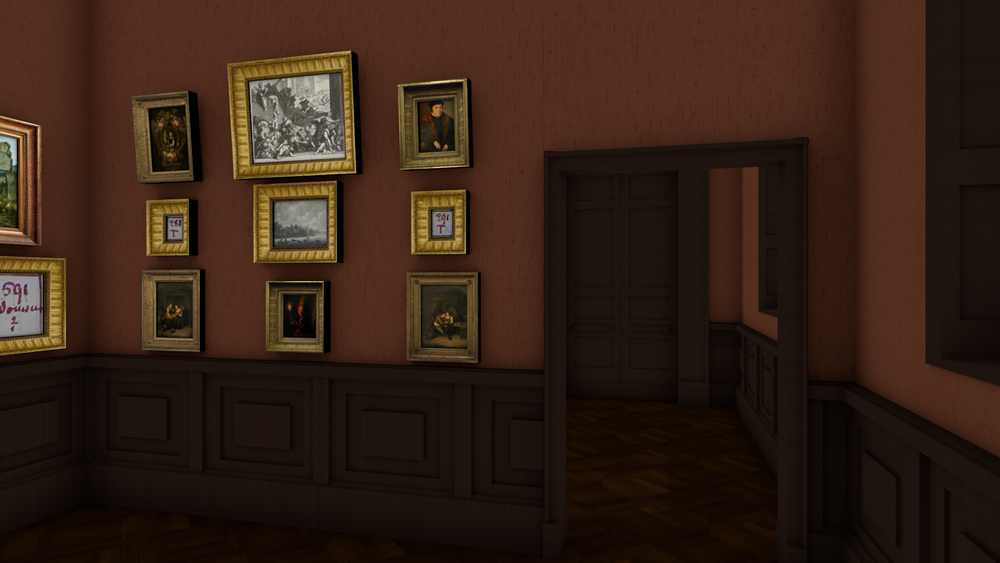1878 Cabinet 7
Connections
In this cabinet, eleven portraits or single figures were brought together. When considered more closely, conscious connections with the other paintings in the room will begin to stand out.
On the left wall, two young cavaliers accompanied the central portrait of a boy dressed in red and wearing a straw hat. This painting had for a long time been considered to be a work by Rubens, yet was now attributed to the Dordrecht painter Jakob Cuyp. The miniature paintings below these works originated from the school of Leiden “Fijnschilders” (“fine painters”). Godfried Schalken, whose “Holy Family” was presented in the centre, also belonged to this group. Visible on the end wall was the portrait of a painter who in the nineteenth century was thought to be Jan Asselijn, but who has since been identified as Karel Slabbaert. This portrait was flanked by landscapes by Dujardin and Pijnacker, as Asselijn, similar to these two painters, was a representative of an Italianate trend in Dutch painting. The German artist Johann Heinrich Roos was similarly guided by southern light. Painted by his hand was a pair of pictures in the second register on the end wall. Here, connections between the paintings could be recognised as well: the portrait hung across the corner of the “Horse Stable” was at the time tentatively thought to be a self-portrait by Roos.





